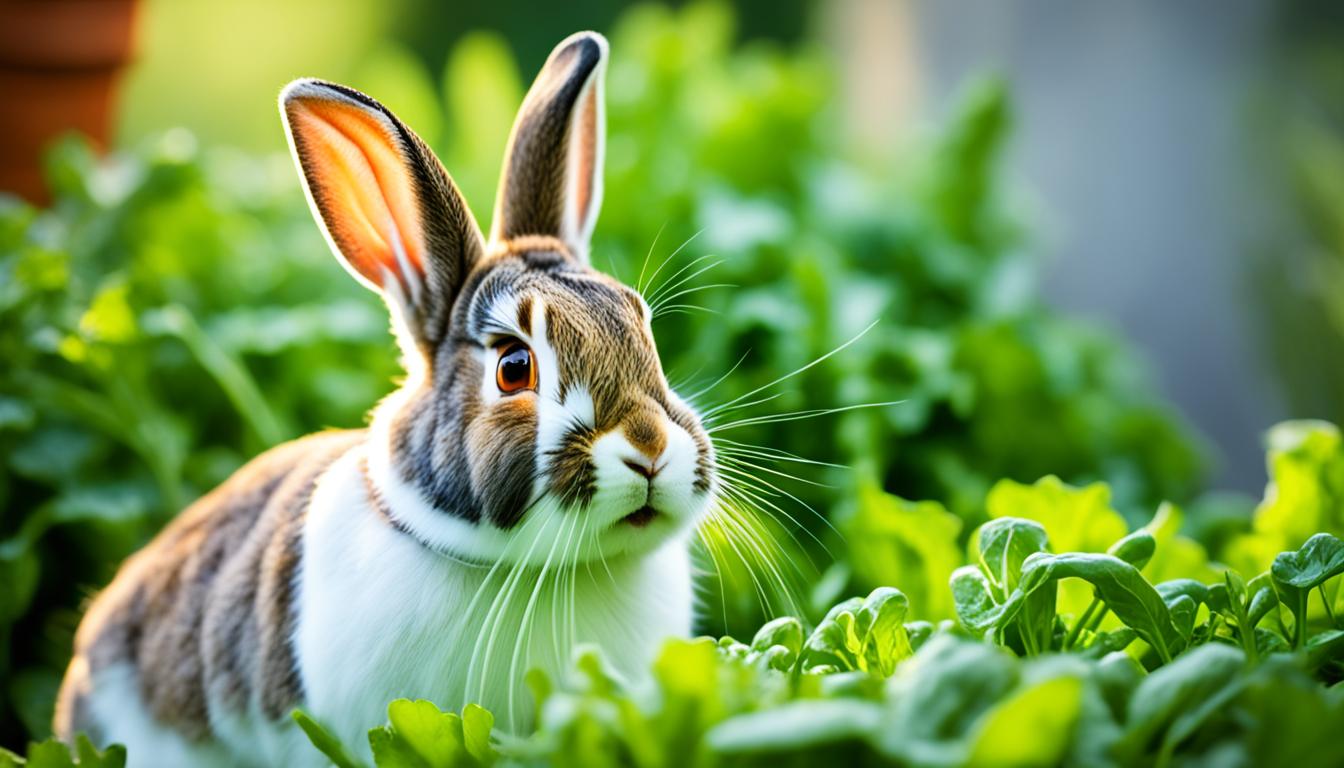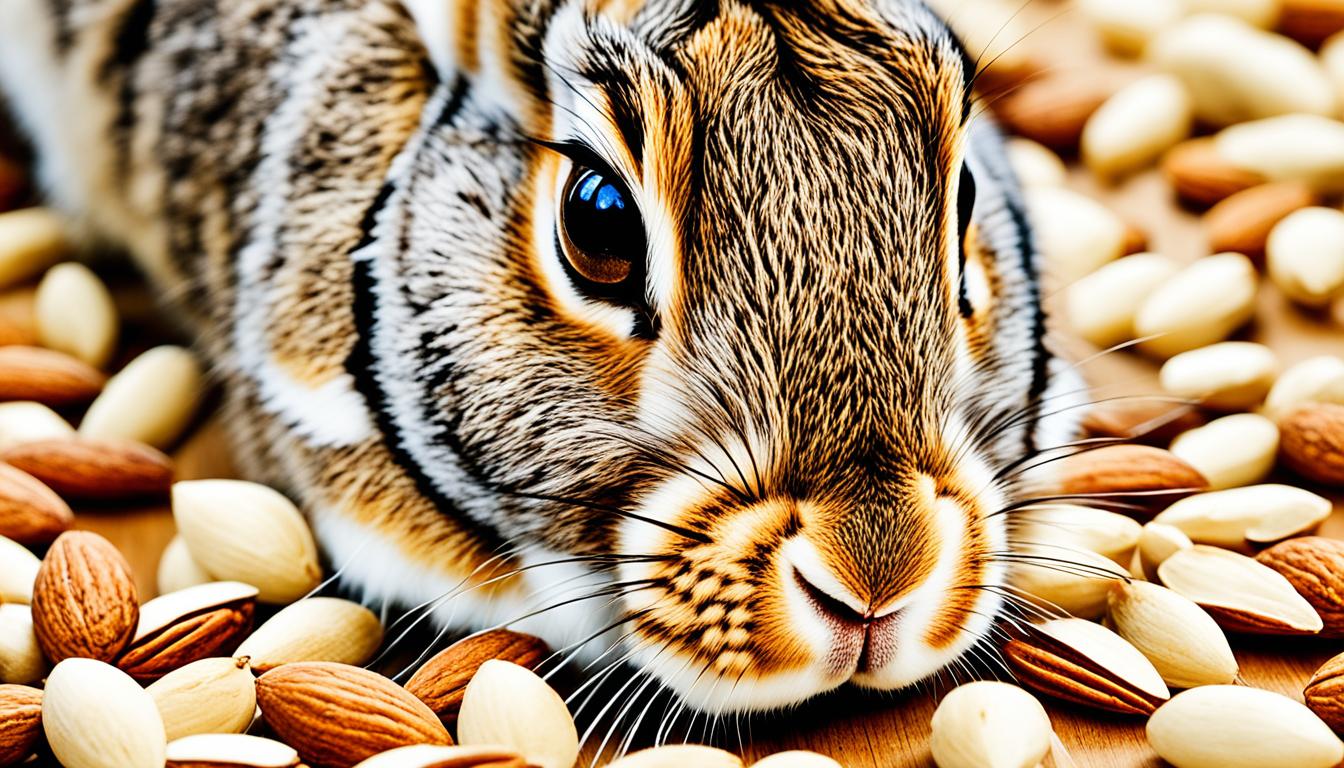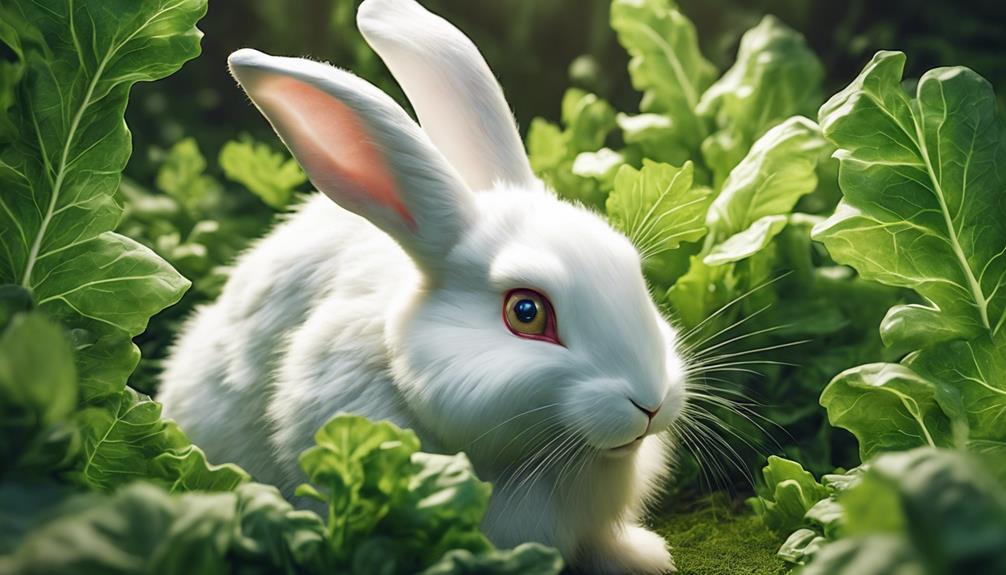Did you know that arugula, a popular salad green, can also be a tasty treat for rabbits? Surprisingly, rabbits can enjoy this peppery vegetable as part of their diet. However, it’s important to be cautious when giving arugula to our furry friends. Eating too much arugula can cause high blood calcium levels and digestive issues in rabbits, who have delicate digestive systems. It’s crucial to provide arugula in moderation to keep your rabbit content and in good health.
Key Takeaways:
- Arugula can be fed to rabbits, but it should be given in moderation.
- Excessive arugula consumption can lead to high blood calcium levels and digestive issues in rabbits.
- Offer small amounts of arugula two to three times a week as a complementary food.
- Monitor your rabbit’s reaction when introducing new vegetables to their diet.
- A balanced and healthy rabbit diet consists mainly of hay.
The Best Leafy Greens for Rabbits
Leafy greens are a vital component of a rabbit’s diet, providing essential nutrients and a variety of flavors for enrichment. Including a variety of safe vegetables in their daily meals ensures that rabbits receive a balanced intake of vitamins, minerals, and fiber. Here are some of the best leafy greens for rabbits:
- Arugula
- Basil
- Beet greens
- Bok choy
- Cabbage
- Carrot tops
- Cilantro
- Dandelion greens
- Kale
These leafy greens are not only safe for rabbits to consume but also low in oxalate acid, which can be harmful in larger quantities. Including these greens in your rabbit’s diet can make up approximately 75% of their daily vegetable intake.
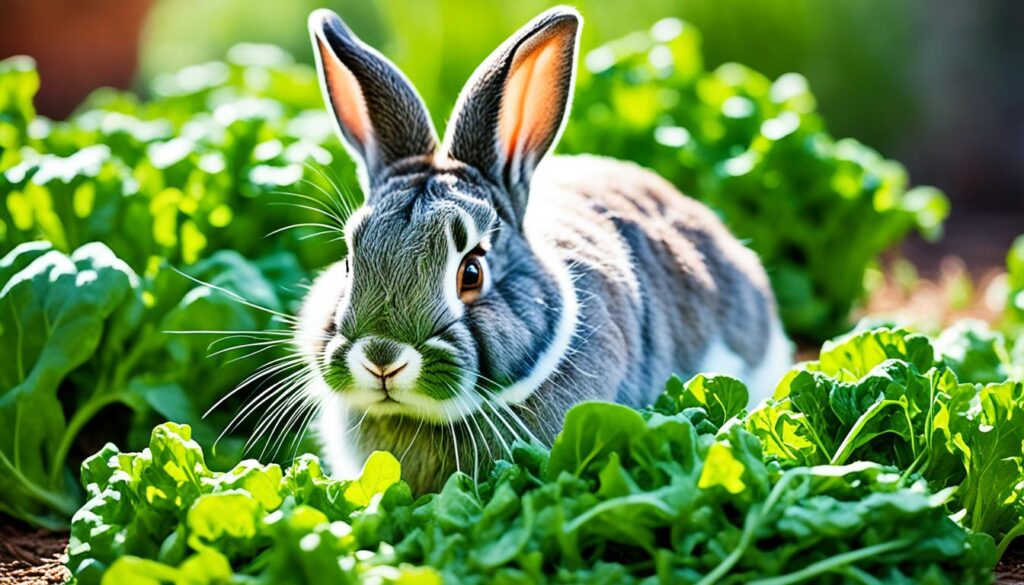
Adding leafy greens to your rabbit’s diet provides them with important nutrients while offering variety to their meals. Remember to wash all vegetables thoroughly, remove any inedible parts, and introduce new greens gradually to avoid digestive issues. Providing a varied and balanced diet will help keep your furry friend healthy and happy!
Non-Leafy Greens and Other Safe Vegetables
In addition to leafy greens, there are other safe vegetables that rabbits can enjoy. These include:
- Asparagus
- Bell peppers
- Broccoli
- Cauliflower
- Celery
- Cucumber
- Green beans
- Peas
- Pumpkin
- Radish
- Squash
- Turnip
| Veggie | Nutritional Benefits |
|---|---|
| Asparagus | Rich in vitamins A, C, E, and K |
| Bell peppers | High in vitamin C and antioxidants |
| Broccoli | Excellent source of vitamin K and folate |
| Cauliflower | High in fiber and vitamin C |
| Celery | Low in calories, high in hydration |
| Cucumber | Refreshing and hydrating, low in calories |
| Green beans | Good source of fiber and vitamins C and K |
| Peas | Contain essential vitamins and minerals |
| Pumpkin | Rich in fiber and packed with antioxidants |
| Radish | Low in calories and high in vitamin C |
| Squash | Rich in vitamins A and C |
| Turnip | A good source of vitamin C and fiber |
These non-leafy greens, along with the previously mentioned leafy greens, should make up approximately 25% of a rabbit’s daily vegetable intake. However, it’s important to note that some vegetables, such as carrots and beets, are higher in sugar and should be given in moderation as a treat.
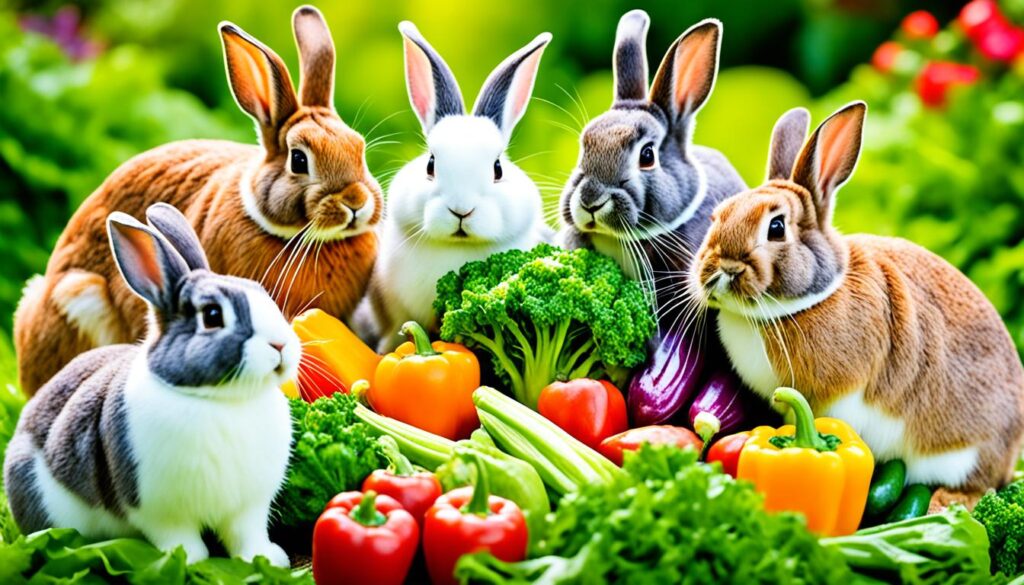
If you’re unsure about introducing a new vegetable to your rabbit’s diet, consult with a veterinarian to ensure it is safe and suitable for your furry friend.
Introducing Vegetables to a Rabbit’s Diet
When it comes to introducing vegetables to a rabbit’s diet, a gradual approach is key. Start by offering small amounts of one type of vegetable at a time and closely observe your rabbit’s reaction. This cautious approach helps to identify any potential digestive upset or allergic reactions.
After introducing a new vegetable, it’s important to wait for 24 hours before introducing another one. This waiting period allows you to monitor your rabbit’s response and ensure they tolerate the new addition well.
Avoid feeding spoiled or toxic vegetables to your rabbit at all costs. Always provide fresh and clean vegetables to maintain their nutritional value and prevent any harmful effects. If you’re sourcing vegetables from your garden, ensure they haven’t been treated with chemicals or come into contact with animal feces.
“Introducing vegetables to a rabbit’s diet should be done gradually and cautiously to prevent any digestive issues or potential allergies.”
By following these steps and guidelines, you can successfully introduce vegetables into your rabbit’s diet, providing them with a variety of nutrients and flavors. Remember to prioritize their safety and well-being by choosing suitable vegetables and monitoring their response. A gradual transition will help your rabbit adapt to a vegetable-based diet and enjoy the added health benefits.
Suitable Vegetables for Rabbits
Here’s a list of safe vegetables that you can introduce to your rabbit’s diet:
- Carrot tops
- Bell peppers
- Broccoli
- Cauliflower
- Dandelion greens
- Green beans
- Peas
- Pumpkin
- Squash
- Turnip
Ensure these vegetables make up around 25% of your rabbit’s daily vegetable intake, alongside the recommended 75% of leafy greens.

Conclusion
Vegetables are an essential component of a balanced rabbit diet, providing vital nutrients, texture, and taste. It is recommended that vegetables make up approximately 10% of an adult rabbit’s overall diet, with the majority of their intake coming from hay. Leafy greens like arugula, basil, and kale are excellent options for rabbits, offering a range of beneficial nutrients.
In addition to leafy greens, non-leafy greens and other safe vegetables can be included in a rabbit’s diet. Bell peppers, broccoli, and pumpkin are nutritious choices that can contribute to a varied and well-rounded rabbit diet. However, it is important to introduce vegetables gradually and monitor your rabbit’s response to ensure they tolerate them well.
When feeding vegetables to your rabbit, always opt for fresh and clean options. Avoid offering any toxic or spoiled vegetables, as they can have adverse effects on your rabbit’s health. A healthy and balanced diet, with a focus on hay, will help ensure that your bunny remains happy and healthy.
